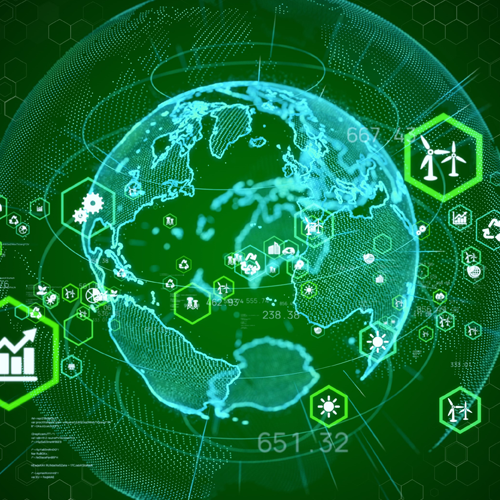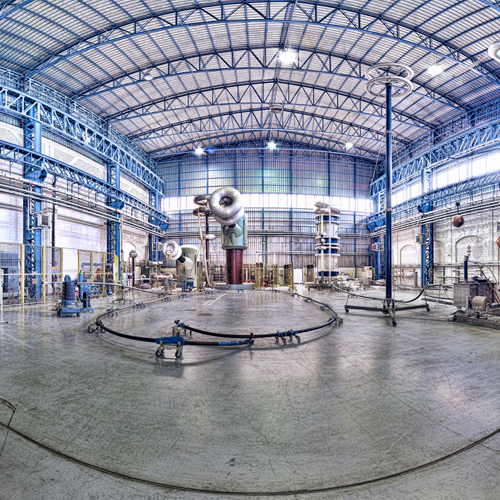Taking the lead in the energy transition

Alternative energy is outpacing fossil and nuclear. According to the International Renewable Energy Agency (IRENA) World Energy Transitions Outlook, countries and regions are increasingly making ambitious and far-reaching commitments to climate action. Over 170 countries are pursuing renewable targets and almost 30 are set to achieve net zero in the coming decades.
There’s more good news, such as strong improvements in emerging centres of demand, such as China and India. The US has returned to the Paris Agreement, with President Biden investing almost $2 trillion in infrastructure and clean energy. More and more corporations are demanding that their supply chains implement sustainability measures. Europe installed 14.7 GW (10.5 GW in the EU-27) of new wind capacity in 2020. (A 6% decrease compared to 2019 was caused by the impact of the COVID-19 pandemic on the onshore wind sector.) If Europe’s governments follow through on their promised measures, the region will install some 105 GW of new wind energy capacity over the next five years, focusing on hitting targets set in their National Energy and Climate Plans.
However, there is still a long way to go. The World Economic Forum ‘Fostering Effective Energy Transition’ report (2021 edition) states that despite growing momentum, progress in the energy transition requires further acceleration. The Intergovernmental Panel on Climate Change (IRENA) indicates that continued efforts are needed to reach Paris Agreement goals. The Intergovernmental Panel on Climate Change’s 2018 Special Report on Global Warming shows that a 45% reduction in global greenhouse gas emissions from 2010 is needed by 2030. The organisation’s research shows that the share of renewable energy in primary supply needs to grow from 14% in 2018 to 74% in 2050 to meet the Paris Agreement 1.5°C goals. This requires an eight-fold increase in annual growth rate, from 0.25 percentage points in recent years to 2 percentage points.
The global energy transmission partly depends on increasing use of low-cost renewable power technologies, but also on wider adoption of electricity instead of fossil fuels to power transport and heat applications. Lowering cost and boosting energy availability is essential to energy transmission success. Technological advances are key to this. Fortunately, advances in technology, coupled with well-informed policies, are making renewable power generation and distribution more effective and affordable than ever. Research by IRENA shows available solutions for immediate deployment substantially reduce emissions, and the abundance of renewable sources worldwide makes them scalable. In addition, energy transition funds are expected to prompt utilities and energy providers to invest in renewable energy generation and transmission.
Although the Paris Agreement targets for 2020 have been missed, the energy transition is expected to significantly gain traction this year and in the near future. However, energy transition and net zero goals may not be reached if power grids are not sufficiently integrated, widespread, efficient and smart. Grid stability has become a vital factor as the importance of decentralization increases. This stability would definitely benefit from international cooperation and standardization.
The energy transition is very much linked to the capability to transmit and dispatch energy from sites where renewable energy are generated and is abundant to places of consumption. Significant CAPEX will be deployed in the near future to move renewable energy, as it is often not generated where it is used. Prysmian is investing heavily in this, for example by developing ways of bringing power from great depths and covering longer length but also by creating new networks that can deliver energy to the point of consumption. Digitization is also essential to realizing smarter, better-interconnected, more efficient grids.
“Prysmian is key in transitioning to a more renewable energy and a decarbonized economy. We are committed to supporting the development of greener and smarter power grids by developing and producing high-power cables – the backbone of power grids - to transfer Energy from renewable sources to end users, through land cable connections and submarine interconnections.”

Hakan Ozmen
EVP Project BU, Prysmian Group
“Interconnectors between countries are another key part of the energy transition: as backbone of power grids, cables are, and will be, an essential part of this development, supporting the implementation of larger, more integrated, efficient and sustainable power transmission systems. We make a complete range of cables that allow the exchange of energy between countries and continents.”
Almost 50% of the Group’s sales can be attributed to business segments and products that contribute to a low-carbon economy. Our R&D Projects’ team is investing in sustainable solutions to reach net-zero emissions, helping enable the energy transition. Making Prysmian cables eco-friendlier is a key goal for the team, which has been working hard to reduce the environmental footprint of the cable, sucah as eliminating the need for lead in energy cables and replacing steel armour for submarine cables with a lighter, more sustainable synthetic material. P-Laser is an example of sustainable cable technology: indeed is the first 100% recyclable, eco-sustainable, high-performance cable technology based on High Performance Thermoplastic Elastomer is fully recyclable and offers and 30and 30% lower CO2 emissions in production. For the offshore wind industry, for example, we have developed a 66 kV offshore wind cable system which allows developers to reduce CAPEX by up to 15%
To accelerate the race to net-zero CO2 emission, Prysmian plans to invest some €450 m by 2022 to further improve the sustainability of its organization and supply chain and accelerate the development of advanced cable technologies as well as assets and services. Besides investing in sustainable solutions that contribute to enabling the energy transition, Prysmian Group is committed to cutting CO2 emissions, and encourages company-wide responsible behaviours. For us, innovation is all about sustainable engineering solutions to effectively make the energy transition happen.






